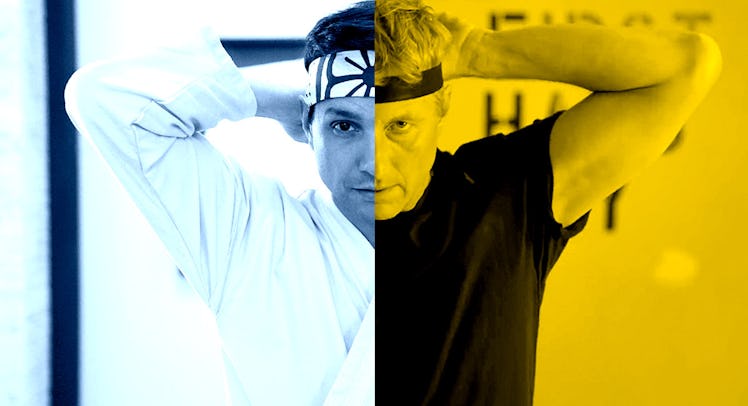‘Cobra Kai’ Taught Me That the Karate Kid and I Were Both Bullies
YouTube Red's Karate Kid nostalgia bomb makes me realize that maybe I'm not always the brave hero in my story.

The makers of YouTube’s nostalgic Karate Kid riff, Cobra Kai, know that everyone believes they’re the hero of their story. But if everyone was a hero there would be no villains. And we all know there are villains. So the borders between who’s right and who’s wrong shift depending on where you happen to be standing. Are you’re looking at life from the perspective of the underdog who’s just won the All-Valley Under-18 Karate Tournament after beating a bully, or from the perspective of the guy laying on the mat after getting hit with an illegal crane kick to the face? When I really think about my own life, I can see there’ve been a lot of Johnny’s to my LaRusso. They may have a different view of who was the hero.
Now I’m not sure that any of my youthful adversaries took our clashes so poorly that, like one-time Cobra Kai bad boy Johnny Lawrence, their lives have imploded. I mean, I hope not. But if they had, I’d like to believe that I could take some perspective, and more importantly that I could recognize my place as an antagonist in our skirmishes. That’s something that Karate Kid and used car salesman Daniel LaRusso seems incapable of. I want to be the better man.
I can only consider, for instance, the ruthless bullying I received in the fourth grade as the son of the principal for a rural Colorado K-12 school. At the time, I had a strong sense of victimhood. Having done absolutely nothing to my peers, they dogged me mercilessly under the achingly blue mountain skies during dusty recesses. What I failed to think about, until watching Cobra Kai, is that those poor kids must have considered me a serious threat to their well-being. They could have only seen me as a narc. And I only aided their behavior by never saying anything to my father. So, some of that was on me.
If I fast-forward to my high school years, the belief in my own victimhood still hasn’t changed. I’m a theater geek and outcast. In my own proto-goth way, I wandered the hall of my high school in a long black trench coat. I sport a stringy mullet. I am dour and humorless and band with other of my ilk. We play Dungeons and Dragons and drink pilfered booze from our parents’ liquor cabinets. More than that, we are the mortal enemies of the jocks.
Until just recently, I considered myself the underdog of those years. There I was, kicking against the monied privilege of the athletes. I had to protect myself, I reasoned, because they were out to get me. They didn’t like me and they let me know it. There were shoving matches and dust-ups, but the tactics of my friends and I verged on terrorism. We pretended to be Satanists, just to make our foes fearful and nervous. One night, we graffitied the road of the rich kid’s bus route. We wrote obscenities and threats in bright-yellow indelible parking lot paint that we stole from a friend’s dad who used it to mark the lines in front of his convenience store. Those threats lingered for months.
Watching Karate Kid in those years, I identified with LaRusso. I was the kid at the bottom of the heap who had to do whatever it took to survive. I never considered that there was someone just as complex and hurt on the other side. I never thought that the kids I felt were my enemies were just as frustrated and scared as I was. And frankly, I have no idea if any of those kids were affected by our weirdness. I have no idea if they are traumatized, or if they witnessed the Columbine massacre long after we’d graduated and wondered if they’d narrowly missed being at the end of weapons wielded by my friends and I. Lord, I hope not.
Thankfully, as an adult, I have an opportunity to live my life with a deeper empathy. I can take the perspective of others and hopefully recognize my own villainy. With any luck, I’ll recognize that those crane kicks to the face don’t put me on the right side of history.
This article was originally published on